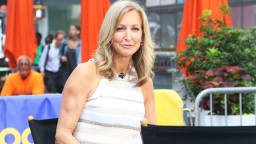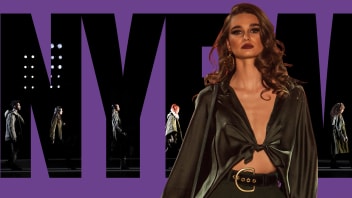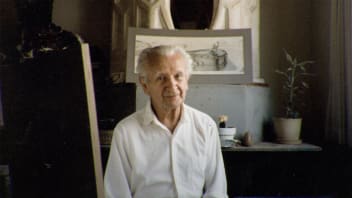Ballerinas Secretly Ruled Fashion Trends for Over 50 Years
EN POINTE
A new exhibit, filled with richly detailed tutus and costumes, makes the case for ballerinas as the 20th century’s greatest fashion muses—even shaping how we dress today.
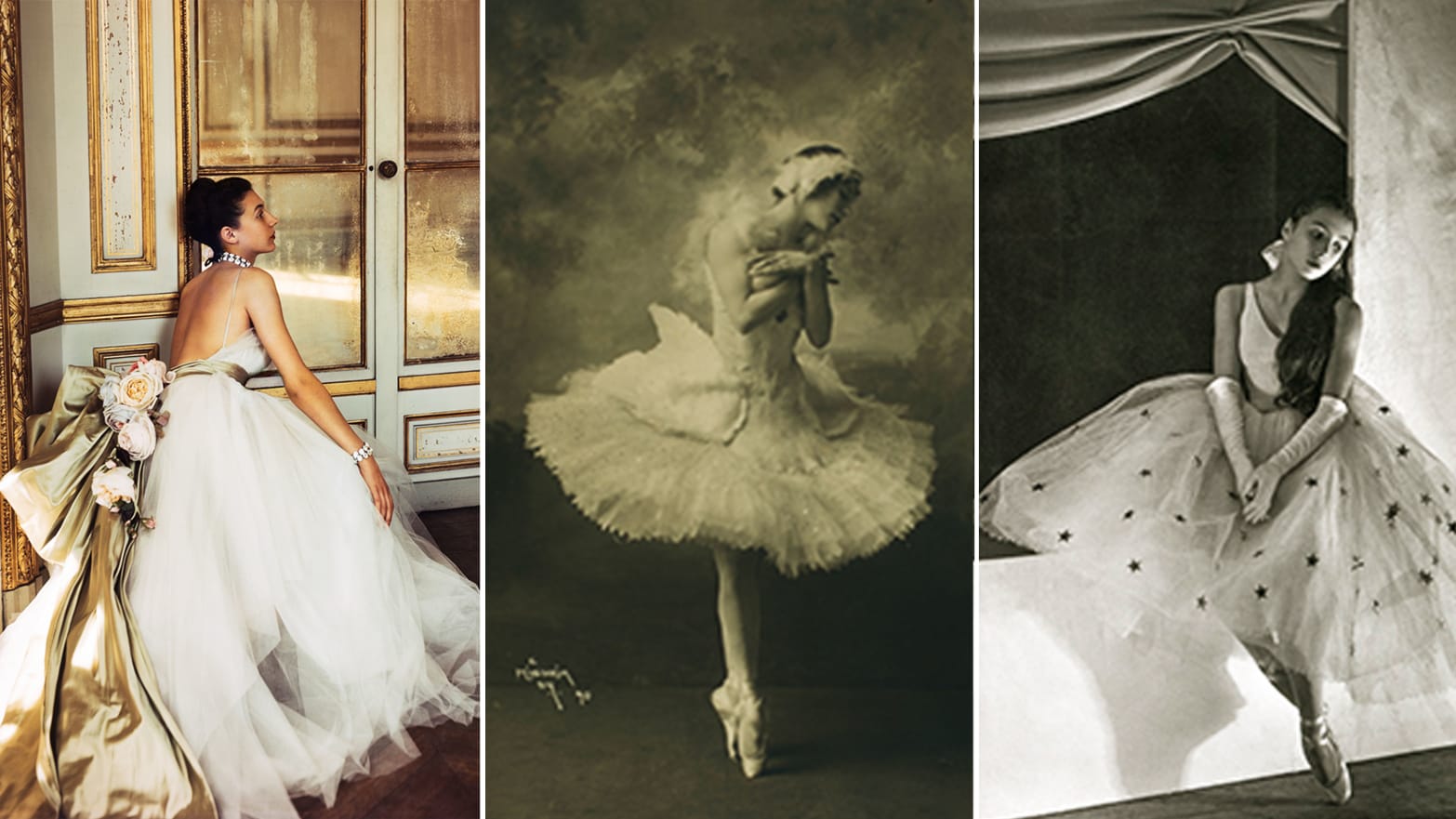
Photo Illustration by The Daily Beast/Courtesy of FIT
According to Marc Happel, director of costumes at New York City Ballet, there are “two camps of ballet people.”
The first are fans who believe that dancers’ bodies—not their frilly tutus or rhinestone busts—should be the focus. They only go to shows where ballerinas pirouette in black leotards and pink tights, so not to distract from the choreography. If you belong to Camp Purist, this is not the article for you.
The other type of enthusiast, Happel told The Daily Beast, simply “loves that ballet is about a great tutu.” They want their Sugar Plum Fairy dripping in bubblegum pink, or their Giselle to wither and die under layers of pristine tulle. Camp Tutu has been rewarded with Ballerina: Fashion’s Modern Muse, a new exhibit at New York City’s Museum at FIT.
There are tutus aplenty in this show, some with resumes more impressive than the CVs of most humans. Upon walking into the exhibit, eyes immediately go to the “Dying Swan” costume and headpiece worn by Anna Pavlova in 1920, its 1,537 feathers shipped from its permanent home at the Museum of London. Patricia Mears, the show’s curator and school’s deputy director, said the garment had to undergo genus testing at customs, with an official counting every plume.
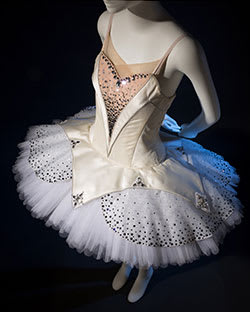
Mark Happel, Symphony in C costume, white silk satin, synthetic net, Swarovski crystals, 2012. Lent by the New York City Ballet.
The Museum at FIT
But it’s not all stage wear. Weave through the exhibit’s mannequins, all in outfits that wouldn’t be out of place in a technicolor Busby Berkeley scene, and you will notice plenty of couture gowns alongside the leotards. Sometimes it’s hard to tell an evening dress from a Juliet costume. That’s the point.
“Ballet costumes influenced fashion, and fashion influenced ballet costumes,” Mears said. “This interplay, I think, was very, very rich during the mid-century.”
Ballet began in the Italian courts of the 1400s and evolved under the reign of Louis XIV, a dancer himself who obsessed over his legs (which he considered to be quite shapely). By the late 19th century, most opera houses also hosted ballet companies. But the transient Ballets Russes, founded in 1909 by Russian expat Sergei Diaghilev, cemented the art form as a cultural force, making celebrities out of corps members like Pavlova.
The Ballets Russes famously collaborated with Parisian artists like Coco Chanel, who began to lift inspiration for her couture lines from what dancers wore on stage. A crimson Chanel dinner coat from 1927 is on display, tiered and feathered not unlike Igor Stravinsky’s Firebird character. A decade later, Chanel’s “Etoiles” navy blue dress blazoned with sequin stars, would resemble a costume from George Balanchine’s Cotillon.
As the status of ballerinas rose from glorified chorus girls to international stars, they dressed the part. Pavlova shopped at the London department store Liberty and was a client of the Spanish couturier Mariano Fortuny.
Later, the Royal Ballet’s Margot Fonteyn would turn to Christian Dior as her unofficial dresser. A strapless amethyst ball gown with a mini train that Fontayne wore while touring America is showcased alongside a costume for the 1949 production of Sleeping Beauty that made her famous. Maria Tallchief, a member of the Osage Nation and one of America’s first prima ballerinas, also favored the French designer.
“These women took their role as ballerinas very, very seriously on and off the stage”
“Most of the dancers did not have the income to afford couture, so at the end of the season, they shopped the sample sales at discount,” Mears explained. “They were small enough to fit into those, or they were given clothes. These women took their role as ballerinas very, very seriously on and off the stage.”
When Christian Dior died in 1957, Fonteyn became a fan of Yves Saint Laurent. She kept dancing in her 40s, partnering with Rudolf Nureyev. Her YSL dresses are on display, one a chevron patterned, nearly-sheer mini, and the other appearing to weigh 50 pounds in feathers. Missing from the exhibit, unfortunately, is the full-length mink coat Fonteyn wore while being arrested in Haight-Ashbury, San Francisco, after a raid on a “hippy party.”
RELATED IN ARTS AND CULTURE
The waistlines on Fonteyn’s gowns remained unchanged for decades, a testament to her slim body and, perhaps, great genes.
Other dancers gravitated to different designers. Virginia Johnson served as a principal for The Ballet Theater of Harlem for much of the 1970s, during a time where ballet-mania and disco fever collided in the United States. Tall and model-esque, Johnson was an easy Halston muse, opting for minimal but elegant gowns.
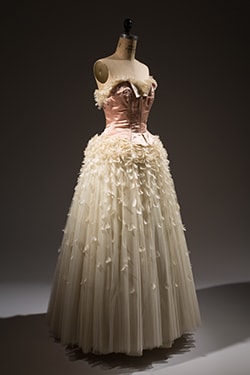
Pierre Balmain, pink and off-white evening dress with coq feathers, 1949. The Museum at FIT, Gift of Barbara Louis
The Museum at FIT
The FIT show celebrates ballerinas, not their partners—you’ll find none of Nureyev’s tights or Baryshnikov’s military coats here. But even when designing tutus for women, Hempell said, he keeps men in mind.
“Tutu waists are always just plain fabric. There’s no embroidery, because when a man holds her waist and she turns, if there’s embroidery or anything metallic, his hands will turn to hamburger”
“When designing, you watch the choreography, watch how much partnering there is,” said Hempell, who works with a team of eighteen. “Partnering is always about a man putting his arms around a woman’s waist and lifting her. You’ve got to know how to design a costume that allows this to happen.”
“That’s something nobody talks about,” Mears added. “Tutu waists are always just plain fabric. There’s no embroidery, because when a man holds her waist and she turns, if there’s embroidery or anything metallic, his hands will turn to hamburger. You have to construct a costume not only with her in mind, but with him in mind.”
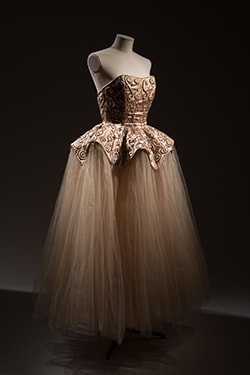
Cristóbal Balenciaga for Hattie Carnegie, pink silk tulle and satin evening dress with silver metal embroidery, 1950.
The Museum at FIT
Though the exhibit honors legendary dancers of the past century, there are plenty of nods to the current generation as well. A principal ballerina can go through three pairs of pointe shoes for each performance.
Until quite recently, the accessories came in one shade of pale pink, to mimic the skin tone of white dancers. For decades, black ballerinas would “pancake,” or cover their shoes in makeup to shade match. Last year, Freed of London released darker hues, which are on display.
“Capezio did pioneer the idea of a range of shades of pointe shoes in the 1970s, after the Dance Theater of Harlem opened, but that was a short-lived phenomenon,” Mears said. “In the past couple of years, a few companies have begun to promote it again.”
Sarah Mearns, a principle at the New York City Ballet, loaned the slipper-pink dress Wedding Dress Happel made for her North Carolina nuptials in 2018. The gown, which is embroidered with pearls and beads, serves as a symbol of how ballerinas trust their clothiers to keep them looking their best, so they can shine during the most important moments of their lives.
“Any designer has to listen to the dancer,” Happel said. “That’s part of my job. You want that dancer to get on the stage and think about the choreography, not the costume they’re in. Unless they’re thinking, ‘I look gorgeous.’”
Ballerina: Fashion's Modern Muse is at the Museum at FIT from February 11 to April 18.


